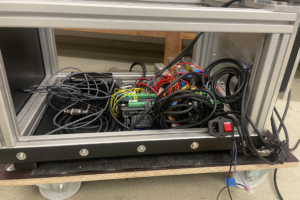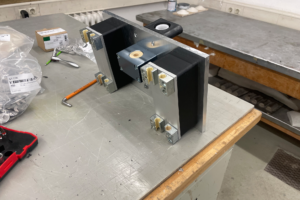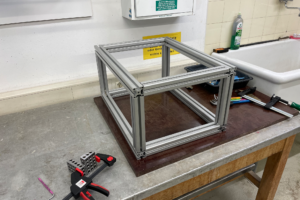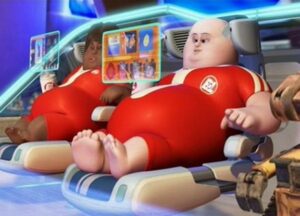The 3D wire bending machine is constructed so it can be manufactured with only a 3D printer and a drill. All of the componentes are off the shelf parts or easily manufactured custom parts. The custom parts are either 3D printed or cast aluminum plate with drilled and tapped holes. This makes the making of the machine very accessible.
The machine runs on GRBL CNC control software, which is an open source software running on ESP32s. The four axes of the machine are driven by closed loop stepper motors ensuring accuracy and reliability even under high load.
To get a bending program from a 3D model a Fusion360 add-in is used. This add-inn exports LRA data for the selected wire part. The data is then imported into a compiler made for the machine that converts the LRA data into G-Code. In the compiler a springback compensation can be adjusted for each material and wire diameter.
The compiler is currently the bottleneck of the machine as it is still lacking a few crucial capabilities for truly accessible use. The main feature missing is collision detection and subsequent automatic adjustment of the G-Code.
I hope that this machine can make wire bending more accessible for makers, opening up new possibilities. Wire bending and tube bending is an under utilised manufacturing technique by the maker community. This machine is a starting point to make this form of digital manufacturing more accessible. It is also an interesting manufacturing technique that needs a different approach when designing parts opening up new interesting solutions.
Die 3D-Drahtbiegemaschine ist so konstruiert, dass sie nur mit einem 3D-Drucker und einer Bohrmaschine hergestellt werden kann. Alle Komponenten sind Standardteile oder leicht herstellbare Sonderteile. Die kundenspezifischen Teile sind entweder 3D-gedruckt oder gegossene Aluminiumplatten mit Bohrungen und Gewinden. Das macht die Herstellung der Maschine sehr einfach.
Die Maschine läuft mit der CNC-Steuerungssoftware GRBL, einer Open-Source-Software, die auf ESP32s läuft. Die vier Achsen der Maschine werden von Schrittmotoren mit geschlossenem Regelkreis angetrieben, was Genauigkeit und Zuverlässigkeit auch bei hoher Belastung gewährleistet.
Um ein Biegeprogramm aus einem 3D-Modell zu erstellen, wird ein Fusion360-Add-In verwendet. Dieses Add-In exportiert LRA-Daten für das ausgewählte Drahtteil. Die Daten werden dann in einen für die Maschine entwickelten Compiler importiert, der die LRA-Daten in G-Code umwandelt. Im Compiler kann für jedes Material und jeden Drahtdurchmesser eine Rückfederungskompensation eingestellt werden.
Der Compiler benötigt noch ein paar wichtige Funktionen, um die Maschine wirklich niederschwellig zugänglich zu machen. Die wichtigste fehlende Funktion ist die Kollisionserkennung und die anschließende automatische Anpassung des G-Codes.
Ich hoffe, dass diese Maschine das Drahtbiegen für Maker zugänglicher macht und neue Möglichkeiten eröffnet. Das Draht- und Rohrbiegen ist eine von der Maker-Community zu wenig genutzte Fertigungstechnik. Diese Maschine ist ein Ansatzpunkt, um diese Form der digitalen Fertigung zugänglicher zu machen. Es ist auch eine interessante Fertigungstechnik, die eine andere Herangehensweise bei der Konstruktion von Teilen erfordert und neue interessante Lösungen eröffnet.
The project:
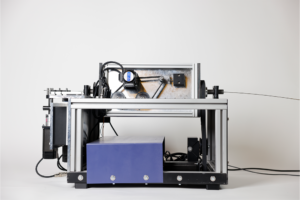
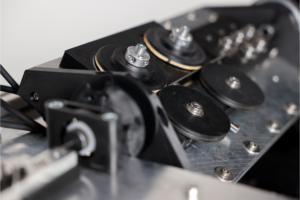
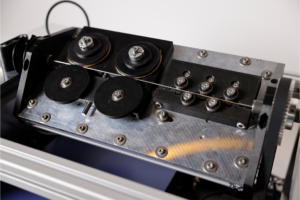
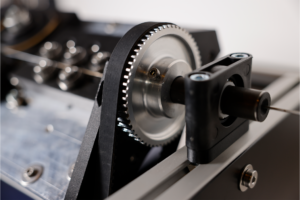
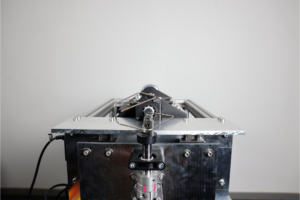
The process:
